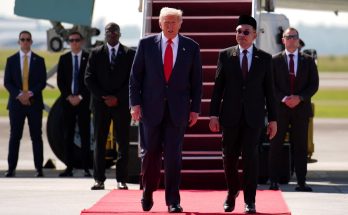 The Indian Space Research Organisation (ISRO) has just launched GSAT-7, India’s first dedicated military satellite. The satellite was launched into the Geosynchronous Transfer Orbit (GTO) from French Guiana using the European Space Consortium Arianespace’s Ariane-5 VA 215. India’s own GSLV rocket, using the indigenous cryogenic engine, is still in the works and will have to undergo a few more rounds of tests before it becomes operational. Until then, India will have to rely on foreign rockets for heavy payloads.
The Indian Space Research Organisation (ISRO) has just launched GSAT-7, India’s first dedicated military satellite. The satellite was launched into the Geosynchronous Transfer Orbit (GTO) from French Guiana using the European Space Consortium Arianespace’s Ariane-5 VA 215. India’s own GSLV rocket, using the indigenous cryogenic engine, is still in the works and will have to undergo a few more rounds of tests before it becomes operational. Until then, India will have to rely on foreign rockets for heavy payloads.
The 2625 kg GSAT-7, developed at a cost of INR 185 crores, will be the first dedicated satellite for maritime communications. The satellite will provide India with UHF, S-band, C-band, and Ku band relay capacity over the Indian landmass and surrounding seas. The deficiency faced by the Indian Navy in terms of both line of sight and ionospheric effects will be rectified to a large extent. Earlier, satellite communications for the navy was ensured through Inmarsat (International Maritime Satellite Organisation; the name was later changed to International Mobile Satellite Organization), originally a non-profit international organization but now a private British satellite telecommunication firm. Inmarsat, established in 1979 at the behest of International Maritime Organization (IMO, a UN body) for building a satellite communications network for the maritime community, provides maritime communication services to a large number of states including governments, airlines, oil and gas industry, mining and constructions, aid agencies among others. With the launch of GSAT-7, India will have its own set up and will not have to rely on foreign agencies. This launch, as an ISRO official commented off the record, is thus important from maritime security and surveillance points of view.
The launch, including insurance charges, will cost India INR 470 crores, but capability building in terms of India’s maritime security is huge. GSAT-7 will improve India’s overall MDA (Maritime Domain Awareness) capabilities as well. MDA is essentially better understanding of the maritime environment in the realm of safety, security, economy and environment. Without adequate MDA, India’s abilities including surveying activities in the Indian Ocean Region and the surrounding seas are going to be limited. Increasing sea-borne traffic for energy transportation and cargo trade increases the potential for disruption of SLOCs and incidents of piracy and terrorism at sea, calling for greater understanding of the maritime domain on a continued basis. MDA is thus important for responding to rapidly evolving crisis situations. However, its relevance for anticipating situations or shape scenarios in the maritime security domain must also be an important consideration.
Nevertheless, the Indian military satellite network has a long way to go. According to the Union of Concerned Scientists, India is currently operating 25 satellites, including those shared with other countries such as France. Of these, 4 satellites are dual-use in nature and are being used by the military. Besides, India launched its own (much smaller) version of GPS with its Indian Regional Navigational Satellite System (IRNSS) in July 2013. In comparison, China, a major driver for the Indian military modernization, operates more than 100 satellites, of which at least 31 are being used by their military. Additionally, China is in the process of completing its own GPS system – BeiDou – by the year 2020 with a total of 35 satellites in its constellation. As of now, the BeiDou Satellite Navigation System has 14 operation satellites and is capable of providing data and location services to the Asia-Pacific region. Upon completion, it will provide global coverage — benefitting the Chinese military along with the civilian sector. Additionally, China is also developing a space station which is likely to be operational by 2020, adding further into China’s capabilities in outer space.
To bridge this gap, New Delhi could cooperate with other like-minded nations such as the US and Japan. To this extent, cooperation on creating Space Situational Awareness (SSA) could also be explored, apart from MDA. On the domestic front, the GSAT-7 is a significant achievement, but delays caused due to technological and financial constraints need to be addressed to create a robust network of satellites to increase the capabilities of the Indian armed forces. Creating an Aerospace command of the armed forces could also contribute in these efforts by enhancing coordination among the three different wings.
The Indian armed forces cannot afford to lag behind, given the likelihood of an arms race in outer space, the possibility of which is increased by Chinese activities in developing Anti-Satellite (ASAT) technologies. Besides advancing its space technology to meet operational needs, India should also focus on using military space capabilities as a deterrent.
(Dr Rajeswari Pillai Rajagopalan is a Senior Fellow and Rahul Prakash a Junior Fellow at Observer Research Foundation, Delhi)
Courtesy: ORF: The article can also be read at GSAT-7: India’s first dedicated military satellite
Author Profile
- India Writes Network (www.indiawrites.org) is an emerging think tank and a media-publishing company focused on international affairs & the India Story. Centre for Global India Insights is the research arm of India Writes Network. To subscribe to India and the World, write to editor@indiawrites.org. A venture of TGII Media Private Limited, a leading media, publishing and consultancy company, IWN has carved a niche for balanced and exhaustive reporting and analysis of international affairs. Eminent personalities, politicians, diplomats, authors, strategy gurus and news-makers have contributed to India Writes Network, as also “India and the World,” a magazine focused on global affairs.
Latest entries
 India and the WorldNovember 26, 2025G20@20: Africa’s Moment – The Once and Future World Order
India and the WorldNovember 26, 2025G20@20: Africa’s Moment – The Once and Future World Order DiplomacyOctober 4, 2025UNGA Resolution 2758 Must Not Be Distorted, One-China Principle Brooks No Challenge
DiplomacyOctober 4, 2025UNGA Resolution 2758 Must Not Be Distorted, One-China Principle Brooks No Challenge India and the WorldJuly 26, 2025MPs, diplomats laud Operation Sindoor, call for national unity to combat Pakistan-sponsored terror
India and the WorldJuly 26, 2025MPs, diplomats laud Operation Sindoor, call for national unity to combat Pakistan-sponsored terror India and the WorldJuly 25, 2025When Fire Ends, Diplomacy Begins
India and the WorldJuly 25, 2025When Fire Ends, Diplomacy Begins







